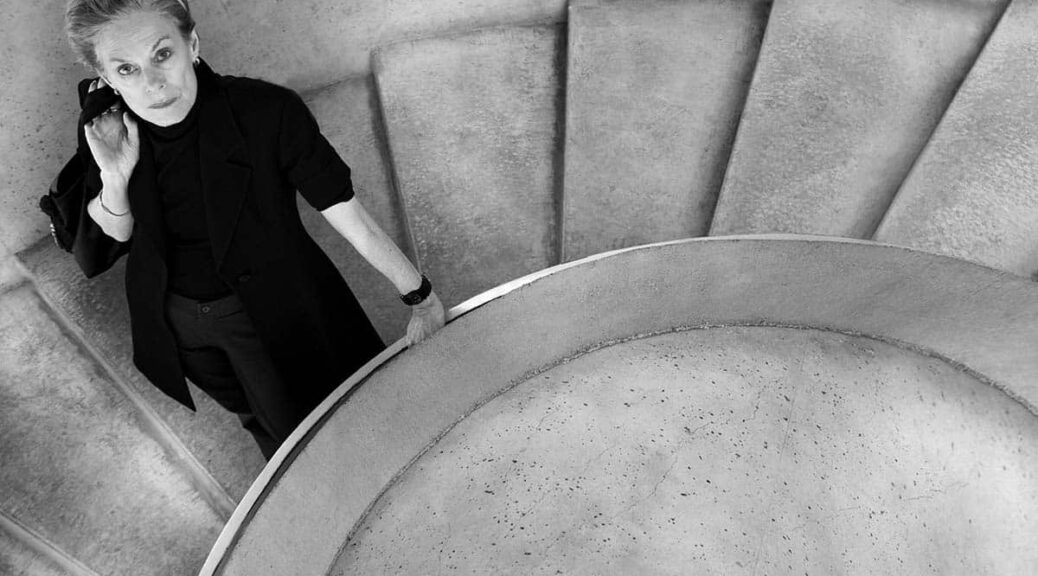LUCINDA CHILDS, born on this date, is an American postmodern dancer and choreographer. Her compositions are known for their minimalistic movements yet complex transitions. Childs is most famous for being able to turn the slightest movements into intricate choreography. Through her use of patterns, repetition, dialect, and technology, she has created a unique style of choreography that embraces experimentation and transdisciplinarity.
She began dancing at the age of six at the King-Coit School. At age eleven, Childs was introduced to Tanaquil LeClercq from the New York City Ballet. LeClercq had inspired Childs to pursue dance, but Childs found that she could not execute everything perfectly. When she met the actress Mildred Dunnock, her ambition shifted to becoming an actress.
Continuing her dance training, she studied with Harriet Ann Gray and Helen Tamiris at the Perry-Mansfield of Theatre and Dance. Childs also worked with theater director Barney Brown from the Pasadena Play-House. During her second year at Perry-Mansfield, Childs auditioned for Tamiris and was cast in a trio with Daniel Nargin. In the summer of 1959, Childs went to Colorado College to continue studying dance and composition with Hanya Holm. This is where she meet Merce Cunningham and began to focus exclusively on dance.
As a musical choreographer, Tamiris gave Childs her first acting job which proved to be a frightening experience for Childs. After this traumatic experience, Childs decided to focus on dance and pursued a Bachelor of Arts degree in dance. She was able to broaden her technical experience by studying with Judith Dunn, Bessie Schonberg and Merce Cunningham. Childs describes Cunningham saying that he “elucidated a kind of particularity and clarity in dance that felt distinctly separate from anything I had experienced up to that point”. While studying at the Cunningham studio, Childs was introduced to Yvonne Rainer who encouraged Childs to show her early works at the weekly Judson workshops. During one of these workshops Childs performed a solo, Pastime (1963), at the Judson Memorial Church. Rainer was also the one to encourage Childs to be a part of the Judson Dance Theater in 1963 with dancers such as James Waring, Valda Setterfield, and Arlene Rothlein. Here, Childs worked primarily as a soloist and was allowed to explore and experiment with her own dance style and choreography. Childs states, “Judson made me interested in dance, but it also made me feel torn between different things – technique, working outside the dance vocabulary, using objects and texts.”
“As one of America’s leading modern dance choreographers, she makes work which can often be described as conceptual dance.” While her minimalist movements were simple, the beauty in her choreography lay in her spatial exploration. Her work captivates the splendor of the different patterns the human body can create across a stage by basic repeated movements such as skipping or turning. She would create an entire performance piece based on one simple combination that would be repeated numerous times but in a different way. Whether she takes apart and reorders the combination or simply reverses it the same movements would not be repeated as they were initially introduced. Often, pieces she choreographed, such as Street Dance (1964), were accompanied by a monologue that would explain not only her movements but what it’s about.
In a 2018 interview conducted by Rachel F. Elson of Dance Magazine, Childs states that she is “responding to the music” when she choreographs. She will listen to the music then think about all the different sequences, trying to figure out “where there could be musical transitions that we abide by, and where there are ones we don’t abide by”. Childs also mentioned, in Speaking of Dance: Twelve Contemporary Choreographers on Their Craft (2004), that the works of Jackson Pollock, Barnett Newman, Mark Rothko, Jasper Johns, and Robert Rauschenberg influenced her works. When she began her Company in 1973, Childs was interested in “creating dances with simple, geometrical spatial patterns”. As such, her exploration of this topic lead to Childs creating a diagrammatical score that noted each dancer’s path.
